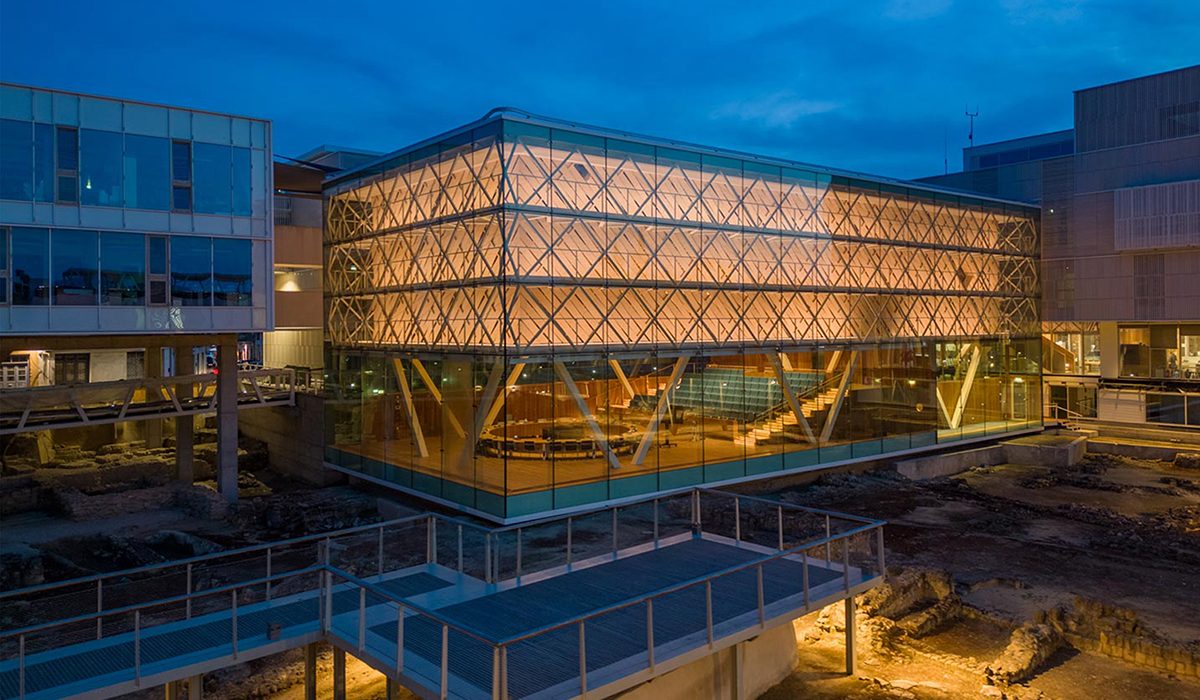irwin kritioti architecture IKA
The new Nicosia town hall is a public building located in the heart of the Venetian walled city which aims to provide a transparent interface with the public, promote innovative sustainable strategies for the local climate, and fit into the historical context of the old market place. Early archaeological excavations required the design to pass through multiple adaptations which allowed the project to evolve into its current layout. The principle strategy breaks up the program mass into 5 distinct buildings which gather around a transparent meeting hall. This allows for a permeable, visually open town hall complex through which the pedestrian can walk. Scaled to the old town morphology, the building blocks define a number of outdoor public spaces between them while also sheltering the central glass meeting hall from the sun & surrounding street noise. Upper level bridges and a perimeter walkway re-connect the separate departments. An open roofed sky-room & lookout with panoramic views across Nicosia completes the composition.
The glass box that contains the council hall is located at the lower level of the antiquities and allows direct visual connection between the citizens walking outside and the events taking place within. Designed as a multi purpose hall, the transparency allows for a clear view of the bi-monthly council meetings along with cultural, business and educational activities. A series of passive strategies to prevent overheating whilst preserving the necessary transparency were developed. An internal ‘basket’ within the glass hall, reminiscent of the previous vegetable markets on site, is designed to filter the daylight, correct the acoustics and generate a perimeter ventilation zone for passive natural cooling via BMS controlled floor & roof vents. A combination of printed and thermal glass reduces the solar gain as well as the ambient noise, and ground source heat pumps allow for further passive energy moderation. Additional shading is provided by a seasonal canopy covering the courtyard to the south. At night the basket is lit up, creating a ‘magic lantern’ effect and a focus point within the neighbourhood.
The surrounding offices are also designed with passive energy strategies from the outset. These include exposed internal thermal mass to absorb daily heat combined with night time cooling. Natural ventilation is used for all offices together with ceiling fans to minimize energy use. The southern facade was calculated as a deep-walled construction to provide natural shading whilst optimizing interior daylight, whereas the northern facade was calculated to function as a thin curtain-wall. The combination of simple passive strategies allows for a greater connection to the seasons outside as well as an 80% reduction in energy usage compared to previous municipal offices. Materials chosen include the ventilated ceramic facade from custom profile tiles designed for the project. Placed in a variety of compositions they bring down the scale to a human proportion. The mix of glazed & unglazed units animates the surfaces as the sun moves around the project throughout the day. Wood is prioritized internally to create a tactile and friendly interior.


